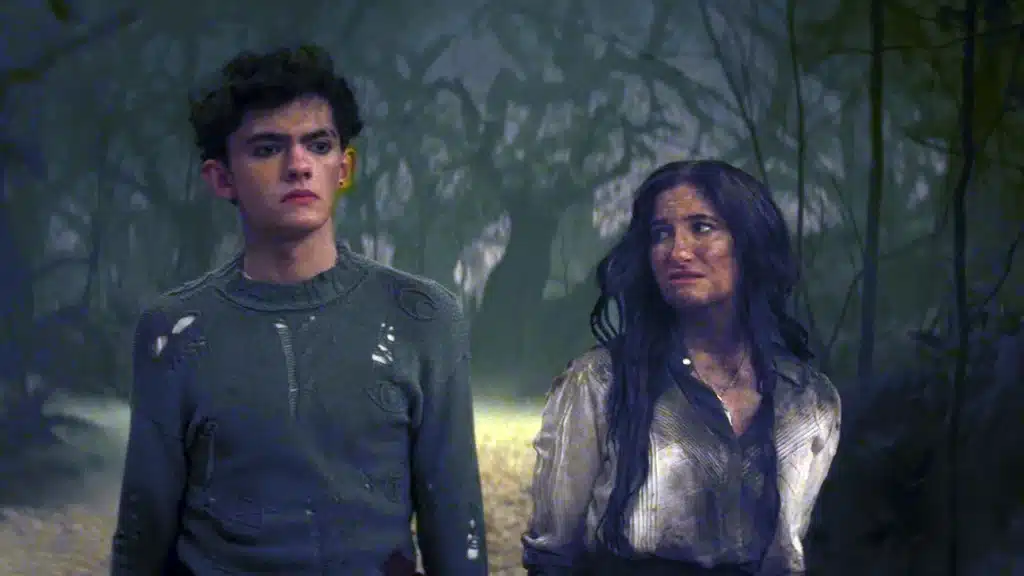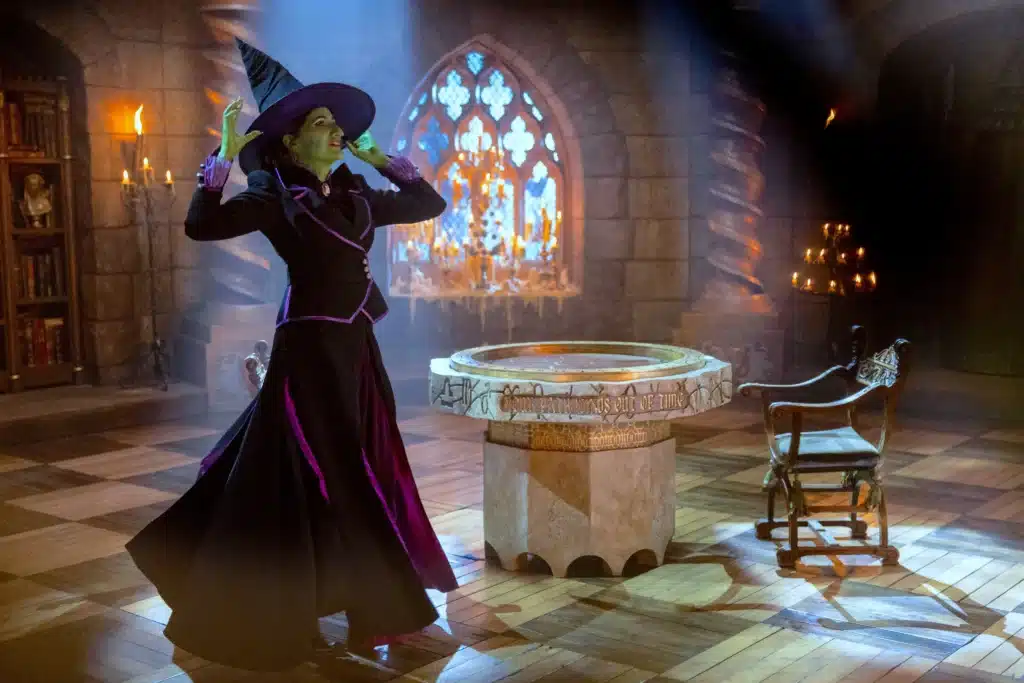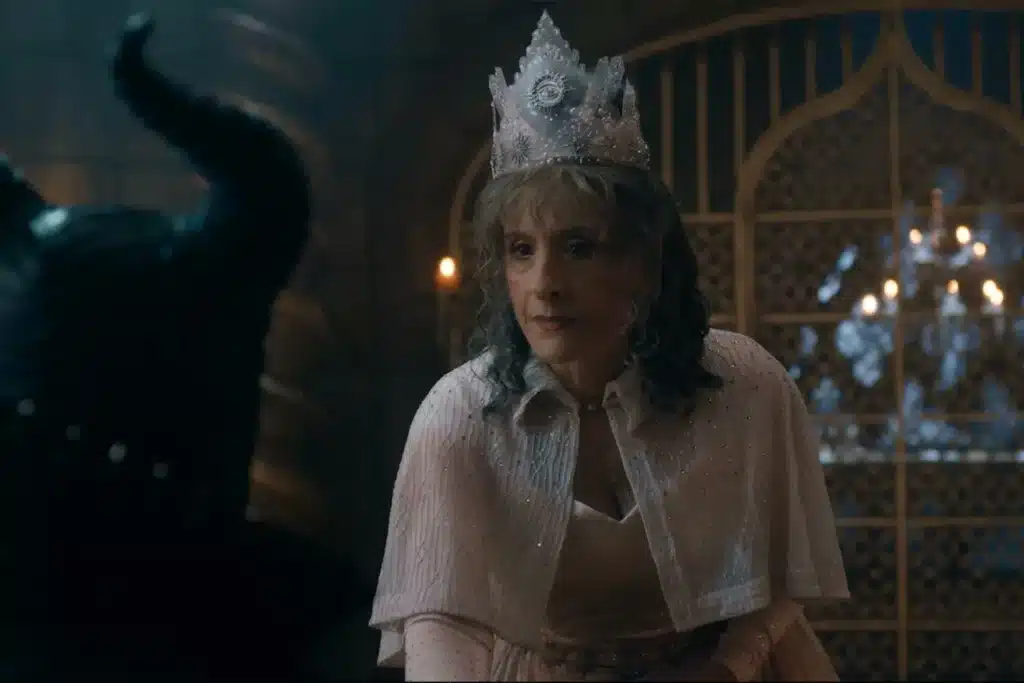Episode 7 of Agatha All Along, titled Death’s Hand in Mine, is a pivotal point in the series, offering rich storytelling, emotional depth, and complex character development. With a title borrowed from the Ballad of the Witches, this episode delves deep into the themes of death, destiny, and identity, particularly through the nonlinear life of Lilia, a divining witch who has been walking hand in hand with death since childhood.
In this article, we will break down the key elements of the episode, explore the significance of the tarot trial, analyze the character arcs, and examine the symbolism that ties it all together.
The Weight of the Title: Walking with Death
The episode’s title, Death’s Hand in Mine, carries multiple layers of meaning. On the surface, it reflects the literal death of Lilia at the end of the episode. But beyond that, it also symbolizes Lilia’s lifelong relationship with death due to her powers of foresight. As a divining witch, Lilia has seen fragments of her future ever since she was a child, which has made her unable to escape death even when it wasn’t yet her time. This is further emphasized by Rio—revealed to be Death herself—when she confronts Lilia, asking, “Don’t you recognize me, Lilia?”

From the very beginning, the episode draws us into Lilia’s tragic story. The opening scene shows Lilia falling, her eyes surrounded by a yellow haze, a visual echo of Wanda’s encounter with the Scarlet Witch. This not only connects Lilia’s powers with Wanda’s, but it also hints at the deeper connection between Billy, Wanda’s son, and the larger multiverse chaos. Lilia’s fragmented experience of life mirrors the time-slipping disorder seen in Loki season two, where characters are pulled between different moments of their lives.
Lilia’s Fragmented Life and Foresight
Lilia’s experience of time has always been fragmented. As a child, she lived her life in random, out-of-sequence moments, making it impossible for her to fully understand the present, past, or future. In earlier episodes, this was hinted at through her erratic behavior, where she would suddenly blurt out a random card or phrase that seemed nonsensical. However, in this episode, it all comes together.

Her teacher, a central figure in her life, explains to Lilia that her power is not meant to be controlled, but observed. This lesson is a turning point for Lilia, as she begins to accept the truth about her abilities. The tragedy of Lilia’s life is that she has been trying to control her foresight for decades, fearing the death she has seen since childhood. But her teacher’s advice—that death is inevitable and what truly matters is how we live—finally brings her clarity. By the end of the episode, Lilia fully embraces her powers and her fate, culminating in a sacrifice that transforms her from a witch running from death to one who faces it head-on.
Billy and Agatha: Exploring Relationships and Identity
One of the episode’s most emotionally charged moments occurs during the walk on the Witch’s Road, where Agatha and Billy have a revealing conversation about Wanda. Billy, who no longer considers Wanda his mother due to feelings of abandonment, openly expresses his conflicted emotions. Despite having shared precious time with her inside the Hex, Billy now views his adoptive family, the Kaplans, as his real parents. He recalls how Wanda left him, his soul wandering aimlessly when she closed the Hex. This abandonment haunts Billy, and the memories of Wanda, once filled with love, are now tainted by the events of Westview.

Yet, despite his anger, Billy’s deep-rooted care for Wanda still surfaces when he asks Agatha if Wanda is truly dead. Agatha’s reply—“Yes, no, maybe”—is deliberately ambiguous. This uncertain answer leaves room for future Marvel developments, keeping Wanda’s fate open-ended. Marvel has cleverly used this moment to leave Wanda’s return a possibility, and fans will be eagerly speculating about when or if she will reappear in the MCU.
Agatha’s role as a mentor of sorts to Billy also develops in this episode. Agatha is not merely the manipulative, power-hungry witch we saw in WandaVision; she becomes a more nuanced character, guiding Billy through his emotional struggles. The way she handles Billy’s powers, particularly his inability to fully control them unless he or someone else is deeply emotional, adds depth to her character. It shows that despite her own dark past, she recognizes the emotional turmoil Billy is going through and offers him understanding, even when her answers aren’t direct.
The Tarot Trial: Symbolism and Revelation
One of the most compelling scenes in the episode is the tarot card reading inside a castle, which serves as a trial for both Billy and Agatha. This trial is rich with symbolism and reveals critical aspects of their characters. Billy transforms into Maleficent—a nod to the Disney character famously portrayed by Angelina Jolie—while Agatha takes on the appearance of a green-skinned witch resembling Elphaba from The Wizard of Oz.

The tarot cards reading begins with Billy pulling the Magician card. This card symbolizes enormous potential and the ability to turn one’s goals into reality, reflecting Billy’s own powers and his connection to Wanda’s chaos magic. Agatha, upon seeing the card, acknowledges the parallels between Billy’s powers and those of Wanda. The next card, the Sun, signifies joy, good fortune, and a reunion, hinting at Billy’s future reunion with his brother, Tommy. This subtle reference to the MCU’s future developments could imply a significant role for Billy and Tommy in the multiverse narrative.
For Agatha, the tarot reading is equally revelatory. The Hanged Man card, which represents sacrifice, suggests that Agatha may have to make a difficult choice in future episodes, potentially involving her loyalty to Rio, her love for Billy, or even her own survival. The Wheel of Fortune card, pulled by Agatha later in the trial, represents the cycles of fate and change, indicating that Agatha’s path is not yet fully determined. This fits with the larger theme of the episode: that fate is not fixed, but a winding path.
Lilia’s Sacrifice and Transformation
Lilia’s journey throughout the episode is marked by her gradual acceptance of her destiny. Her foresight, which has been both a gift and a curse, becomes the key to defeating the Salem Seven during the tarot trial. As she reads the cards, Lilia begins to understand the full scope of her powers, realizing that she has already seen what is going to happen. This knowledge allows her to take control of her fate, inverting the Tower card and causing the Salem Seven to fall onto the swords in the ceiling, ending the trial.

Her sacrifice is not just a defeat of the enemies, but a moment of personal transformation. The Tower card, which typically signifies destruction and chaos, is reversed, signifying a miraculous transformation and a new beginning. Lilia’s willingness to embrace her destiny, despite knowing it leads to her death, is a powerful conclusion to her arc.
The Revelation of Rio as Death
One of the biggest reveals of the episode is that Rio Vidal is actually Death. This was a theory that had been brewing throughout the season, with several clues pointing toward Rio’s true identity. In the tarot reading, Rio is represented by the Death card, a symbol not only of endings but also of rebirth. Her design in this episode takes inspiration from Lady Death in the Marvel comics, where she is a cosmic entity overseeing the realm of death.

Rio’s dual nature, holding both a knife and a flower, represents the cycle of life and death. Death, as symbolized in tarot, is not simply the end of life, but the beginning of something new. Rio embodies this concept, being both a force of destruction and the harbinger of new life. In the comics, Lady Death plays a crucial role in the lives of characters like Thanos, who is famously infatuated with her. While it remains unclear whether Marvel will explore these themes in the MCU, Rio’s reveal opens up possibilities for future stories involving cosmic entities and the multiverse.
Lilia’s Final Moments: Rebirth Through Death
The episode ends with a powerful scene in which Lilia, having accepted her fate, transforms not through death, but through rebirth. As she inverts the Tower card, the chaotic scene around her shifts, and the Salem Seven are defeated. Lilia, instead of being shown dying, is depicted as slipping back in time, reliving her first lessons as a witch. This moment is a symbolic rebirth for Lilia, as she embraces her role not just as a witch, but as a protector of her coven.
This final act ties in with the episode’s overarching theme that death is not the end, but a transition to something new. The use of Jim Croce’s Time in a Bottle during the closing moments underscores this theme. The song, famously used in X-Men: Days of Future Past during Quicksilver’s slow-motion scene, evokes a sense of time slipping away, yet it also serves as a reminder that life’s moments are precious and fleeting.
Conclusion: A Complex Episode with Layers of Meaning
Death’s Hand in Mine is a masterfully crafted episode that weaves together multiple narrative threads while exploring deep themes of destiny, death, and self-discovery. Lilia’s journey, marked by her struggle to understand her powers and accept her fate, resonates deeply with the audience. The nonlinear storytelling mirrors Lilia’s own fragmented experience of life, making the viewer feel the disorientation and eventual clarity she experiences.
The tarot trial, the evolving relationship between Agatha and Billy, and the reveal of Rio as Death all build toward the show’s final episodes, leaving fans eager for more. With so many threads left unresolved and the potential for massive revelations in the upcoming finale, Agatha All Along continues to deliver a captivating narrative filled with rich symbolism and emotional depth.
As we head into the final episodes of the series, it will be fascinating to see how these threads come together and what the future holds for Agatha, Billy, and the witches of the Witch’s Road.